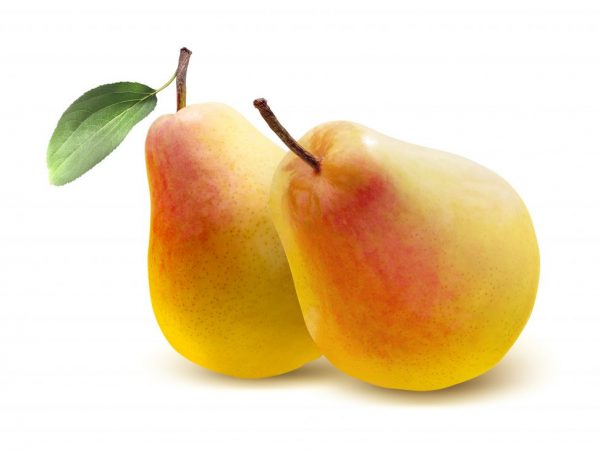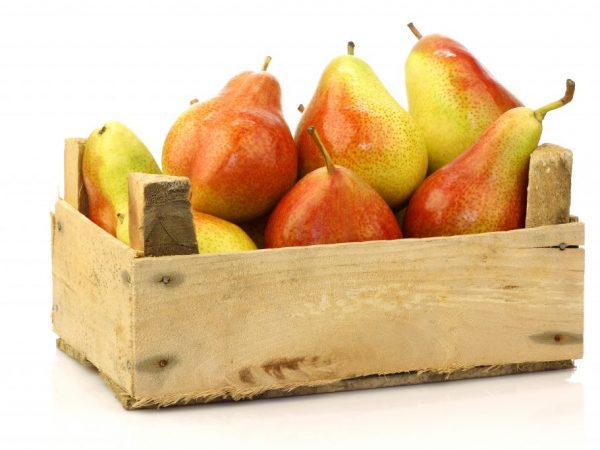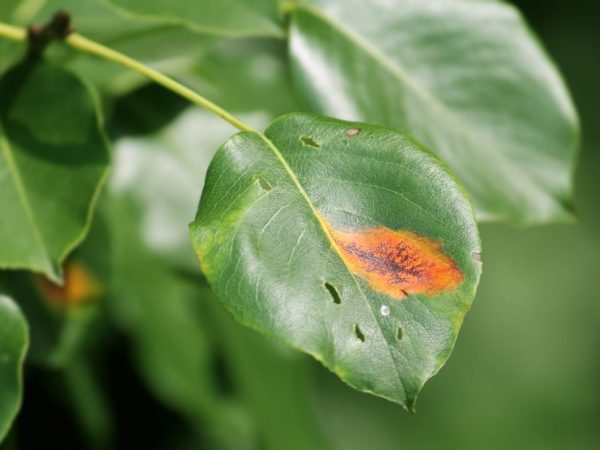Characteristics of the Skorospelka variety pear from Michurinsk
the Skorospelka pear from Michurinsk is a fairly early fruit. Already at the beginning of summer, you can harvest fruits. It is the result of crossing two varieties - Ussuri and Bere Ligel. Differs in high yield rates. Also appreciated for its taste. We will consider a detailed description of the variety in the article.

Pear varieties Skorospelka from Michurinsk
Characteristics of the variety
The early ripening plant from Michurinsk is distinguished by the fastest time for the appearance of fruits. Harvesting falls on the 20th of June.
Features of the variety:
- This variety has a long shelf life. At room temperature, fruits can lie for about a month, and in a refrigerator for 3-4 months.
- Differs in a rather high winter hardiness. Even at -40 ℃ pear gives excellent aging performance. The bark does not freeze, and the level of damage to the sheets does not increase.
- Good endurance is characteristic. Sudden changes in temperature, as well as cold winds, will not affect the fruits in any way.
Harvesting begins already 5 years after planting. With good care, the yield increases significantly every year. At about the age of 40, the Skorospelka pear from Michurinsk gives about 100 kg of fruit per hectare. To increase the yield of this variety, it is necessary to plant a pollinator nearby.
The variety is suitable for making jam or juice. Can be used as marshmallow, jam, confiture.
Description of the tree
Height up to 10-15 m. The crown is pyramidal in shape. It is not overly dense. The shoot is relatively straight and the bark is yellowish.
The foliage is medium in size and not a standard egg-shaped. The edges are slightly ciliated. They can be pointed.
Description of fruits
The size of the fruits of this variety is small. Weight varies from 70 to 100 g.
Description of fruits:
- perfect pear shape;
- light green color, which turns yellow when ripe;
- the skin is smooth;
- stalks of medium length;
- shallow saucer;
- the subspinal tube is short, etc.

Description of pear fruits
The taste of the Skorospelka pear from Michurinsk is excellent. Inside, the fruit is juicy and sweet, with a certain sourness. The structure is slightly loose, slight granulation is felt.
Care
The sunny area is the most favorable place for the growth of Skorospelka. When planting, you must pay attention that there is no shadow from buildings nearby. After all, the sun's rays are the main factor for obtaining the sweet taste of the fruit. The more sun, the sweeter the pear.
The best time to plant Skorospelka pears from Michurinsk is autumn (preferably in September, so that there is still no cold weather) or spring (immediately after the snow has completely melted on the ground). When landing, you should adhere to the following rules:
- The hole must be dug at least 2 weeks before planting. The depth is about a meter, and the diameter is from 80 cm.
- Pay attention to the soil. If it is sandy, then the bottom of the pit should be covered with a 20 cm clay layer.
- The hole should be filled with fertilizer a little less than half.You can use old manure or plant humus.
- Before planting, it is necessary to drive a wooden peg into the hole - about one and a half meters.
- A small hill is made in the middle of the hole and a seedling is planted there. It is necessary to straighten the roots carefully.
Watering
After planting, the soil must be well tamped and watered (2-3 buckets). It is worth noting that a variety like Skorospelka from Michurinsk does not crave frequent watering. One watering per season will be enough. 1 bucket of water (10 l) is enough for 1 tree. In case of a lack of moisture, the taste of the fruit becomes more tart.
Weeding
In addition to watering, care implies constant cleansing of weeds, mulching with peat or compost, and best of all with humus. In addition to fertilizing the soil, it must be loosened from time to time. This contributes to a better penetration of air and moisture, as a result - the ripening of tasty fruits.
Top dressing
In autumn, trees need more minerals. In any garden center you can buy a mineral complex for fruit trees. In the spring, the tree needs nitrogen fertilization. The best are ammonium nitrate and urea.
Pruning
Pears of the Skorospelka variety from Michurinsk tend to decrease in size with a rich harvest. To increase the fruit, it is necessary to do annual circumcision - removal of damaged shoots, crown formation, circumcision of diseased areas. This will help normalize fertility.
Diseases and pests
Scab is a common disease in fruit trees, but this variety does not suffer from this disease. But unfavorable conditions can affect the onset of fruit rot.

Diseases and pests
Other pests affecting the plant:
- Rotten carrion is a major source of disease. The spores that form on it are transferred to the foliage with the help of the wind. Signs of the disease are the formation of brownish spots that eventually damage the entire fruit. To prevent damage to pears, the damaged fruit should be plucked from the tree regularly.
- Various types of mites often appear on the bark of the plant. Therefore, in the fall, it is necessary to start cleaning the tree from pests. You can get rid of them by removing the damaged bark. Another effective way is whitewashing. A fungicide can be added to the diluted mixture for better effect.
- The unpaired silkworm is a rather dangerous insect for all deciduous ones. They destroy the bark of the tree. The fight against such pests is quite difficult if there are a large number of them. But to prevent such a problem, it is only necessary to regularly clean the tree of weeds.
There are other ways to fight. The main one is chemicals. They will help to quickly and effectively get rid of pests. But it is worth remembering that their influence may have a bad effect on the taste of the fruit.
Conclusion
The Skorospelka pear variety from Michurinsk is very popular due to its fertility. Another advantage is resistance to frost, winds and temperature changes.
This variety is prized for its early harvest, excellent taste. There is one drawback - a decrease in the size of the fruit due to the high yield. But it is eliminated with regular grooming.


